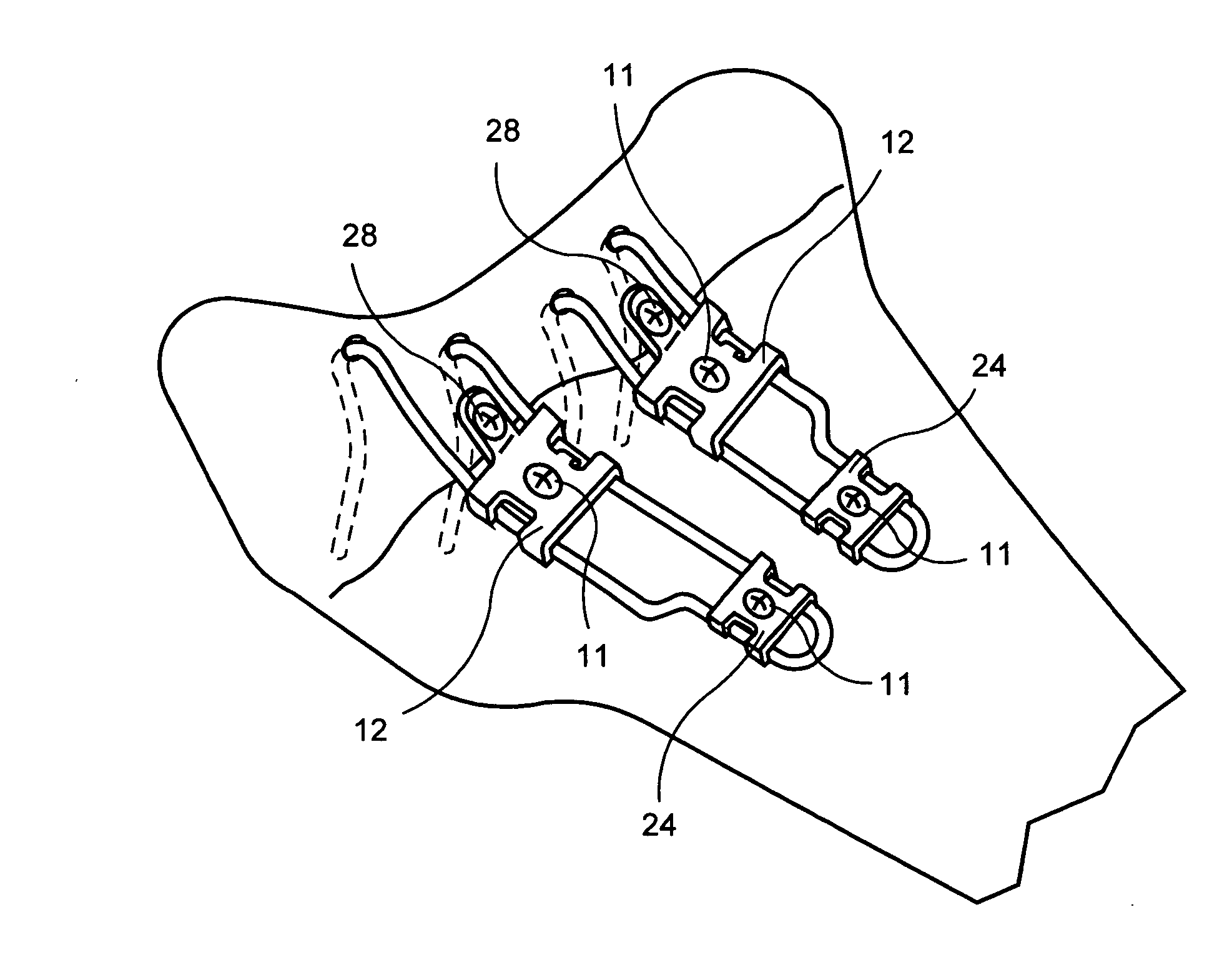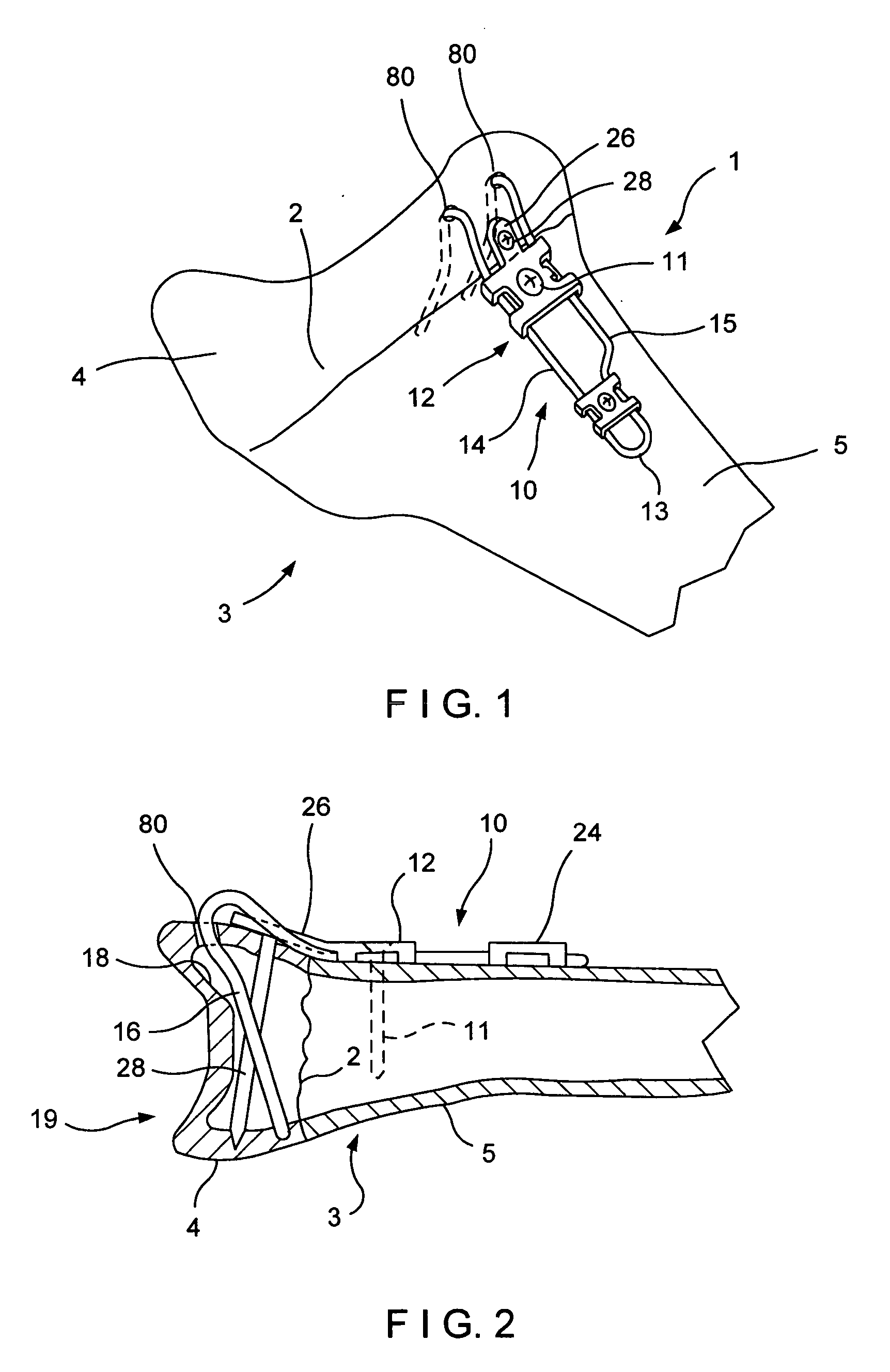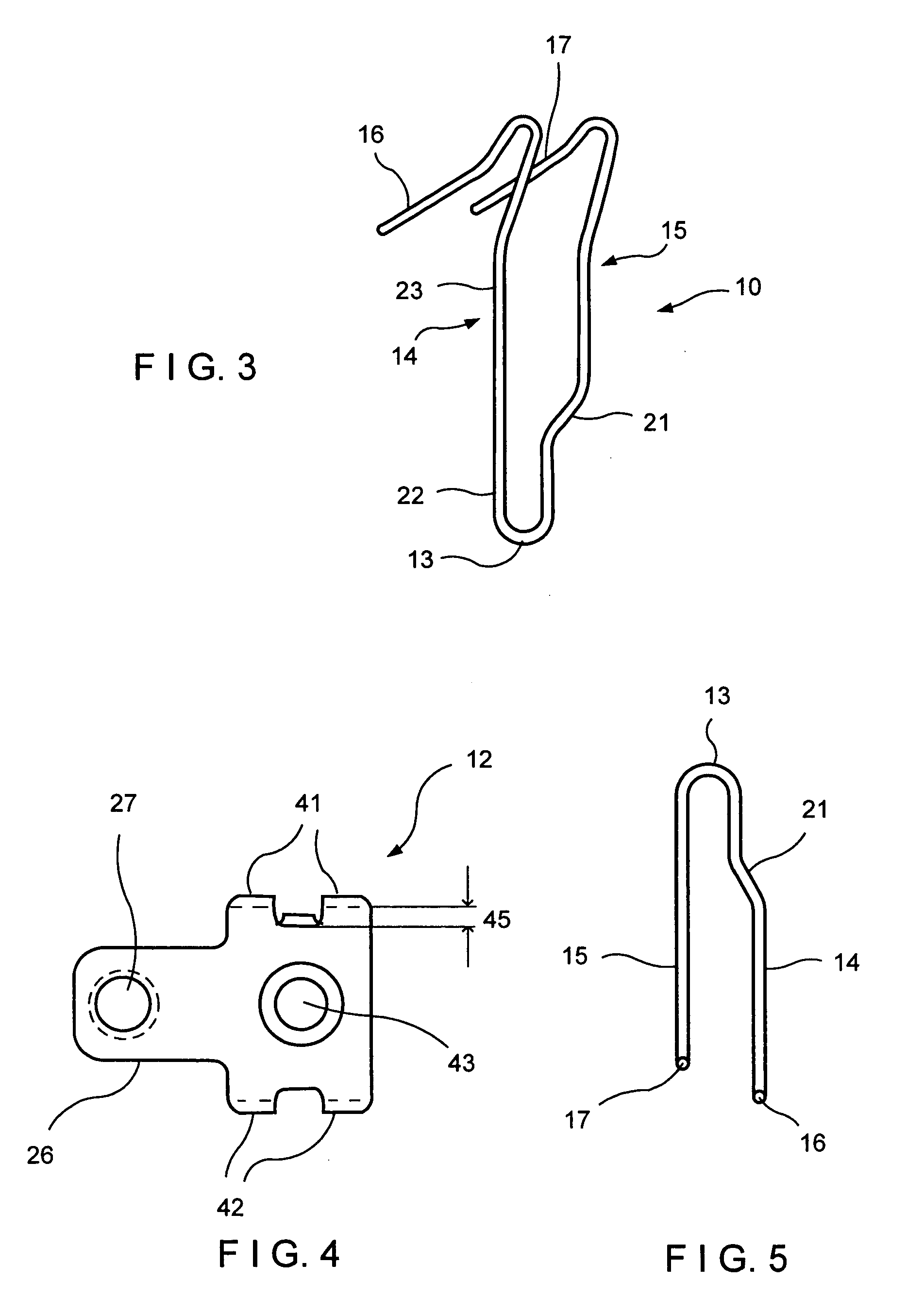Fracture fixation system including buttress pin and post washer
a fixation system and fracture technology, applied in the field of fracture fixation systems including buttress pins and post washers, can solve the problems of distal fragments, insufficient and insufficient wide spread of fixation legs
- Summary
- Abstract
- Description
- Claims
- Application Information
AI Technical Summary
Benefits of technology
Problems solved by technology
Method used
Image
Examples
Embodiment Construction
[0052]FIG. 1 shows a fracture fixation system I adapted for fixation of a fracture 2 of a bone 3. The bone 3 will be considered herein as the distal end of the radius of the wrist but the fracture fixation system 1 is adapted for fixation of fractures of other bones, such as the distal end of the fibula, the medial malleolus of the ankle and the distal end of the ulna, as well known to those skilled in the art.
[0053] The fracture 2 of the bone 3 produces an unstable distal bone fragment 4 and a stable bone fragment 5. The fixation system 1 provides fixation of the fracture as will become evident from the description which follows.
[0054] The fracture fixation system I comprises a wire element 10 serving as a buttress pin which engages and positions the unstable bone fragment 4 to reduce the fracture. The buttress pin 10 is secured in position by a bone screw 11 that is screwed into the stable bone fragment 5. The bone screw 11 engages the buttress pin 10 through the intermediary of...
PUM
 Login to View More
Login to View More Abstract
Description
Claims
Application Information
 Login to View More
Login to View More - R&D
- Intellectual Property
- Life Sciences
- Materials
- Tech Scout
- Unparalleled Data Quality
- Higher Quality Content
- 60% Fewer Hallucinations
Browse by: Latest US Patents, China's latest patents, Technical Efficacy Thesaurus, Application Domain, Technology Topic, Popular Technical Reports.
© 2025 PatSnap. All rights reserved.Legal|Privacy policy|Modern Slavery Act Transparency Statement|Sitemap|About US| Contact US: help@patsnap.com



